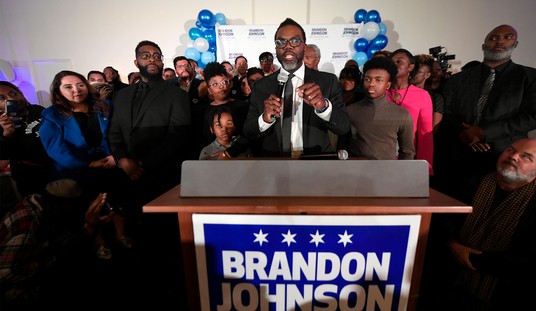Last Thursday, I posted a celebratory 1999 Los Angeles Times analysis of the mechanisms that created the financial collapse nine years later. Interestingly, the New York Times took a much different perspective when looking at the liberal lending policies promoted by Fannie Mae under Franklin Raines in that same year. In fact, Steven Holmes predicted that an economic downturn would create the same kind of failure seen just ten years earlier in the savings-and-loan sector:
In a move that could help increase home ownership rates among minorities and low-income consumers, the Fannie Mae Corporation is easing the credit requirements on loans that it will purchase from banks and other lenders.
The action, which will begin as a pilot program involving 24 banks in 15 markets — including the New York metropolitan region — will encourage those banks to extend home mortgages to individuals whose credit is generally not good enough to qualify for conventional loans. Fannie Mae officials say they hope to make it a nationwide program by next spring.
Fannie Mae, the nation’s biggest underwriter of home mortgages, has been under increasing pressure from the Clinton Administration to expand mortgage loans among low and moderate income people and felt pressure from stock holders to maintain its phenomenal growth in profits.
Holmes noted that this appeared to be a solution in search of a problem. While lending to minority applicants still lagged behind that of white applicants, the economic boom of the 1990s had closed that gap. In the previous five years, mortgages awards to Hispanics jumped 87%, to African-Americans by 71%, and Asians 46%. Mortgages to white applicants also increased by 31%, which proved that a rising tide indeed lifted all boats, without government intervention to impose “fairness”.
Raines’ move to further incentivize subprime lending troubled Holmes, and noted that any economic turbulence could quickly lead to disaster:
In moving, even tentatively, into this new area of lending, Fannie Mae is taking on significantly more risk, which may not pose any difficulties during flush economic times. But the government-subsidized corporation may run into trouble in an economic downturn, prompting a government rescue similar to that of the savings and loan industry in the 1980’s.
”From the perspective of many people, including me, this is another thrift industry growing up around us,” said Peter Wallison a resident fellow at the American Enterprise Institute. ”If they fail, the government will have to step up and bail them out the way it stepped up and bailed out the thrift industry.”
Now we know that Holmes and Wallison had this dead right. As long as Fannie Mae and Freddie Mac bought subprime paper, lenders continued to profit from them, pushing them to make more and more loans to unqualified borrowers with no risk to themselves. Meanwhile, rather than manage the GSEs with fiscal discipline as first priority, Raines and his executives ran it as a political organization, looking to distort the market for political ends. When critics tried to point this out, Raines’ defenders — mostly Capitol Hill flacks raking in contributions from Fannie/Freddie sources — called critics and regulators bigots.
Holmes had it right in 1999. One might expect the New York Times to point this out a little more often. Instead, they continue to echo Barack Obama and blame “greed” for the failure. There may have been greed at the bottom of this — but it was greed for political power. (via Power Line)








Join the conversation as a VIP Member